Planning to be a wildlife photographer? Never disrespect the jungle
If you’re an aspiring wildlife photographer, Anoop Rohera has a few tips for you. Firstly, he insists, be respectful of the boundaries and don’t disturb animals
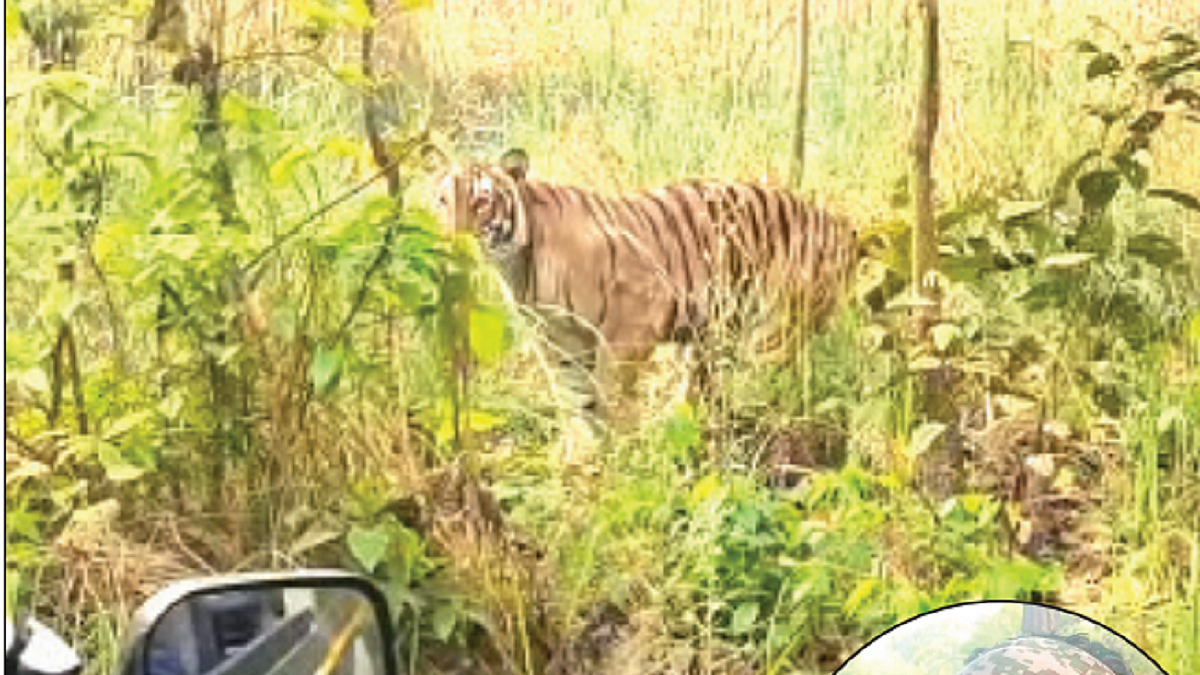
Anoop Rohera (47), a still wildlife photographer who has been documenting the jungles of North India for the past 14 years, feels that though going to a Jim Corbett or a Sariska might be a vacation for many, there’s a lot one needs to take care of before entering the jungle.
And no, he’s not saying this as part of some cliche travel advisory, but from personal experience. He’s been mockcharged by animals like wild boars, tigers, and leopards multiple times over the years. Most recently, Rohera was mock-charged twice by a tigress in Dudhwa National Park in the span of a minute. The tigress was so close to him, that she didn’t even fit in his camera lens properly.
He doesn’t blame her though. The tigress had hunted an animal for her cubs who were waiting for the kill behind some bushes on the other side of the road. Because of the constant movement of vehicles, the tigress hadn’t been able to take the kill to her cubs, when Rohera’s driver provoked her, and she charged at them.
The photographer sighs, “No animal wants to attack you just because. Be respectful of the boundaries set by the forest authorities.”
Rohera says there are some basic things one should keep in mind when visiting a forest. Don’t wear bright clothes, talk loudly or make too much noise, because all of these distract the animals and might make them angry. Don’t throw around waste (duh!).
Understand that you are the one visiting their habitat, and do some research about the animals, the birds, the flora-fauna you might encounter on your way. Live with the locals if you have time, and see how they protect themselves and their cattle, while living in the midst of wild animals.
He says most people go to jungles only to see the tiger or leopards, and often miss out on the other aspects. “There’s more to a jungle than just wild animals. There are over 1,500 species of birds in Indian forests, who make calls that can actually lead you to certain events in the jungle,” he points out.
Rohera’s love for the jungles has also made him realise that the state governments don’t do enough to promote wildlife sanctuaries, which often results in them not getting adequate funds and not having any facilities for tourists. Instances of hunting and poaching also increase when tourists don’t visit these places.
If you’re an aspiring wildlife photographer, Rohera has a few tips for you. Do some recee and learn about the specific zones and times where you might encounter animals. Understand that you’ll only have very small windows of opportunities to capture spectacular moments, so be proactive and set up your equipment on the gypsy beforehand. Carry a long lens with your DSLR, a sturdy tripod with a video head, a good phone with a quality camera, and a mobile gimbal. And come fully acquainted with the technicalities of your camera and lens.
Documenting snow leopards in the Himalayas
Growing up, if you ever played Where’s Waldo? or Spot the Differences, you’d love the social media handles of 20-year-old Vibhu Grover, who often shares pictures of snow leopards that are disguised so well, you’d not even realise that there is one in the photo.
Grover is a photographer from Delhi who is currently working on documenting the endangered animals of the Himalayas and how the drastic changes in the weather patterns over the years have been affecting general life above 4000 meters.
Born to a doctor and an engineer, it was his interest in astronomy that made Grover dream of the Milkyway. When he first saw it, he realised he could not capture it on his phone since the sky was so dark. And since that day, he became obsessed with the idea of taking a picture of the Milkyway. After going on multiple treks, Grover clicked his dream picture in 2017. Says he, “By then, along with astronomy, I fell in love with trekking.”
In 2018, Grover got introduced to the world of snow leopards when he cycled to Spiti in winters, and then there was no looking back. Now, he aspires to become a mountaineer, ultrarunner, and a documentary filmmaker, and has spent the last few years traveling, climbing, and working in some of the remotest corners of the Indian Himalayas to achieve this dream of his.
But surviving in the mountains is a task in itself. Mountaineering requires months of training to master, and one needs to be extremely careful of their health to even think of trekking. While snow leopards are found at altitudes sometimes as high as 18,500 ft above sea level, Grover’s base camp is close to a village at about 14,000 ft above sea level, which means he needs to trek for days, with all his heavy equipment on his shoulder, every time he needs to capture even a single picture.
Not just that, it also means walking or cycling for days, sleeping in tents, surviving on packaged food, or cooking whatever you can in those temperatures and conditions. Lucky for Grover, he loves doing all this, except eating packaged food, to the extent that he’s often cycled to his destination even if there were buses available. Last year, he cycled 700 kms and crossed six high passes (some as high as 16,500ft above sea level) while carrying 40 kgs of gear to reach Zanskar (a remote village in Ladakh) for a documentary shoot.
Grover was so enthusiastic during this expedition that he skipped camping at Zanskar Sumdo, but soon exhausted himself and camped near a stream. He couldn’t cook because his burner had some issue and considered going back because he struggled to breathe. But that night, he saw three Tibetan wolves close to his camp, and then again, a few days later in Zanskar. It reminded him that despite the hurdles, his passion often lead him to witness surreal moments like this.
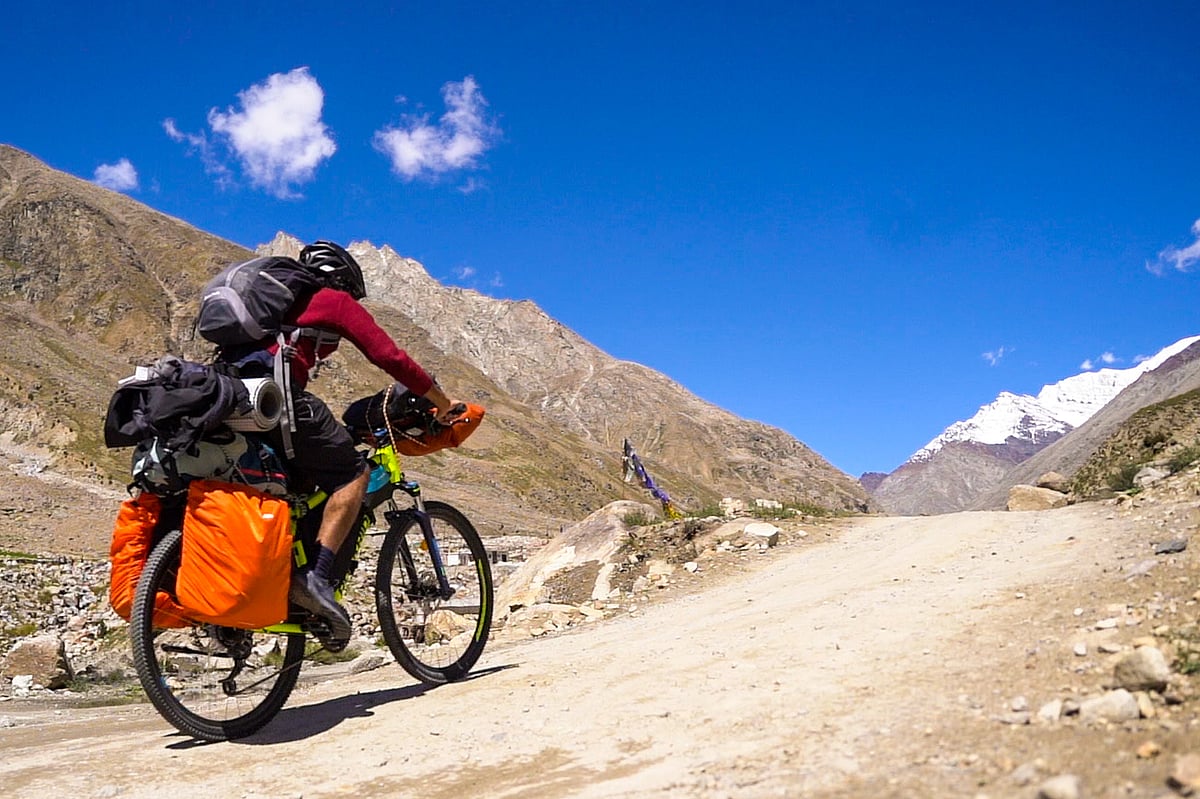
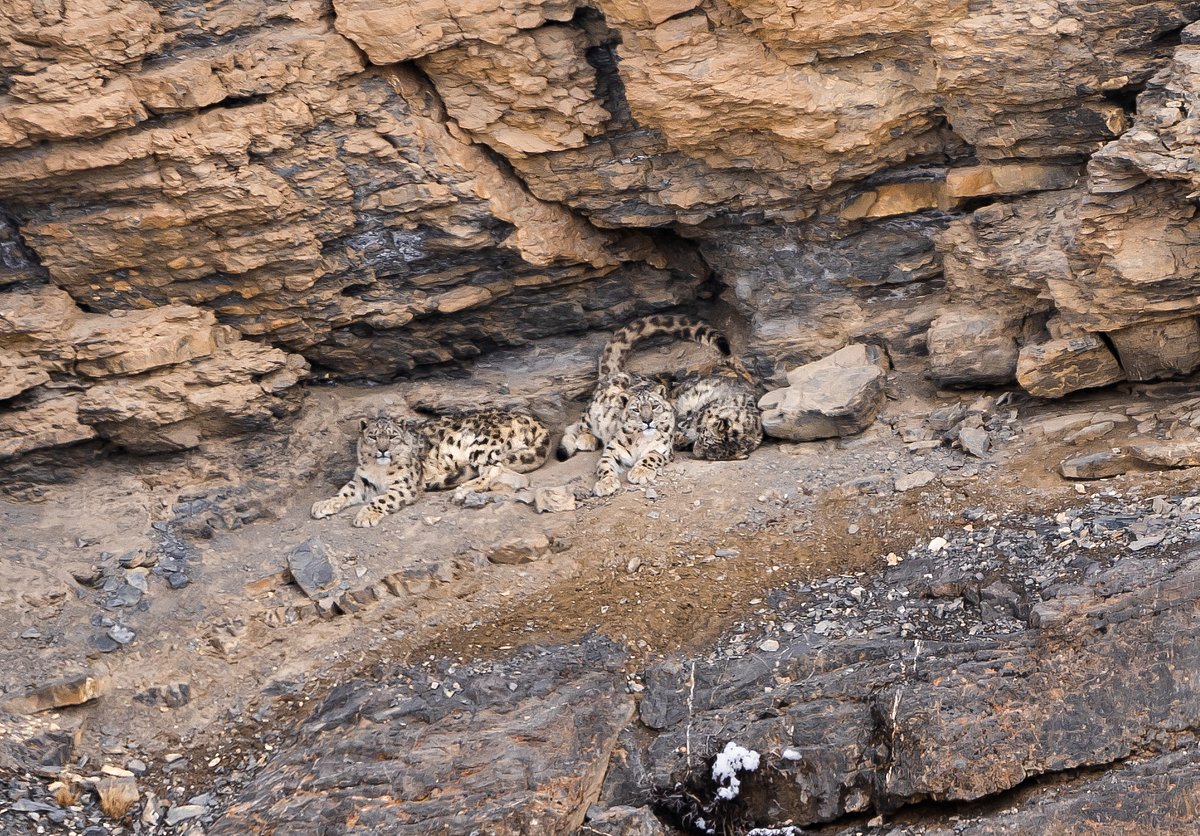
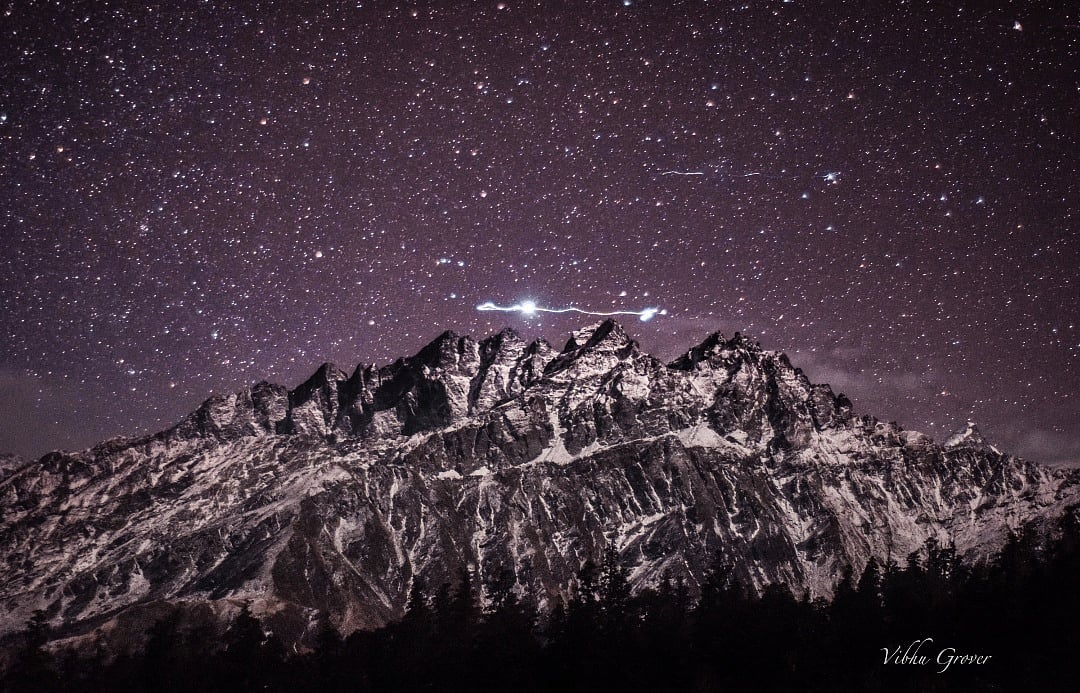
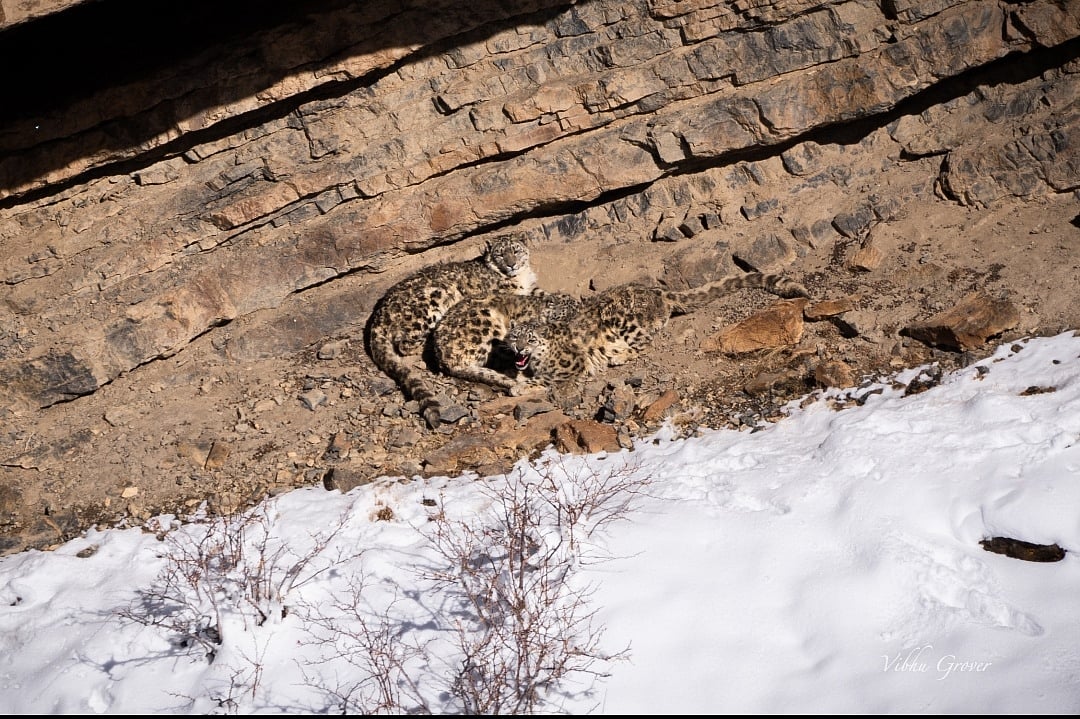
Since his first trek, Grover has experienced a few more special moments like this. When he first sighted a snow leopard in 2018, he had witnessed an intense hunting attempt. Last January, there was news of a snow leopard mating, “as the entire gorge echoed with their mating calls”, recalls Grover. But while the father leopard died, Grover spotted the mother leopard and the two cubs in March and spent three days documenting them. Says he, “On day one itself, they looked at me as I got there, stared for a while, then cuddled up together and went back to sleep.” He saw the cubs playing with their mother, attempting to hunt a blue sheep and failing at it.
But isn’t working around leopards dangerous? Where does one even run to in temperatures as low as -30 degrees, with snow all around and heavy camera gear on their shoulder? According to Grover, snow leopards never attack people, but one has to be careful not to disturb them. He shares, “I personally now enjoy the process of following the signs of the leopard rather than spotting one. One has to sit like a rock, silently scanning the mountains, while knowing there are high chances that the snow leopard has already spotted you and with its perfect camouflage, probably sitting right in front of you while you have no clue of its whereabouts.” Fascinating!
While we struggle to fight the monotony in our lives daily, on the mountains, every day is different. On climbing days, one has to wake up early, pack, cook and start the day’s expedition, climb, and then pitch the tent at the end of the day again. On days when Grover captures the snow leopards, he leaves when it’s still freezing cold outside with a packed lunch, and spends the entire day scanning mountains.
But a lot of times, the loneliness of his work also gets to Grover. Imagine camping up in the mountains alone, with no one in sight, and seeing only wild animals for days on end. It gets overwhelming at times, and the lack of a support system in the mountains only aggravates the isolation. But Grover says he’s also found travellers on his journeys that have helped him in more ways than he could imagine.
Over the years, Grover has come to realise that financial stress will always make things a bit more difficult, but sometimes working with like-minded people or in groups provides you with the motivation and courage that going solo often steals you of. And that to work in the mountains, you don’t just need to be mindful of your goals, but should also understand the dynamic of the place and people and be respectful to them.
While in Delhi, Grover was a part of the protests against the CAA-NRC-NPR and the farm laws, and documented those, while also covering the Covid crisis extensively since he felt the mainstream media was hiding several realities from the general public.
(This was first published in National Herald on Sunday)
Follow us on: Facebook, Twitter, Google News, Instagram
Join our official telegram channel (@nationalherald) and stay updated with the latest headlines
